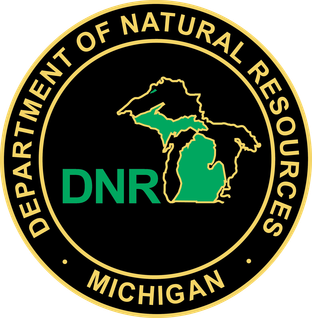Single deer in Berrien County (MI) tests positive for EHD
The Michigan Department of Natural Resources Wildlife Disease Lab and the Michigan State University Diagnostic Center for Population and Animal Health today announced they have confirmed that a deer in Berrien County has died from epizootic hemorrhagic disease (EHD), a sometimes-fatal viral disease found in wild ruminants.
Infection does not always result in disease. Signs of illness shown by infected animals are highly variable, and range from none at all to extensive internal bleeding and edema (fluid accumulation). The disease is transmitted by a type of biting fly called a midge.
Illness can come on suddenly and severely, but also can linger for weeks or months in a low-grade state. In severe forms of the disease, deer lose their appetite and fear of humans, grow progressively weaker, salivate excessively and finally become unconscious. Due to a high fever and dehydration, infected deer often seek water to lower their body temperature and to rehydrate, and are found sick or dead along or in bodies of water. There is no evidence that humans can contract the EHD virus.
Deer deaths from EHD in Michigan have occurred sporadically since 2006. Prior to 2006, EHD outbreaks in Michigan occurred in 1955 and 1974. The estimated mortality has varied from 50 to 1,000 deer per year in the affected isolated areas. In 2012 the largest die-off occurred, with an estimated loss of over 12,000 deer. No cases of EHD were confirmed in the state in either 2014 or 2015.
“Due to the prolonged, dry, hot weather this year, we are not surprised to see EHD emerge,” said Tom Cooley, DNR wildlife biologist and pathologist. “Mortality numbers will depend on the strain of the virus, and how widespread the disease is – die-offs usually occur within one watershed area. If multiple watersheds are involved, the total mortality is higher.”
There is no known effective treatment for, or control of, EHD in wild populations. The disease has been seen for decades in many areas of the United States.
Where EHD is more common, deer acquire immunity to the disease over time, mortality is less severe and population recovery does not take long. Because Michigan deer, historically, have not been exposed to the viruses as frequently, they can be more susceptible to some strains. Death losses may be severe but are typically restricted to localized areas. Population recovery in severely affected areas may take longer than has been experienced in other states.
Since the 2012 outbreak, DNR Wildlife Division staff members and collaborators at Michigan State University have been conducting research to assess the extent and impact of losses in the affected areas, and to measure how fast population recovery occurs. Property owners or recreationists who discover dead deer should report it through the DNR’s Diseased Wildlife Reporting database or call their closest DNR Customer Service Center.
To dispose of deer that die from EHD, it is acceptable to allow natural decomposition to occur; just remove the dead deer from the water source. Natural decomposition will not spread the disease or cause other disease outbreaks. Property owners are responsible for properly disposing carcasses that they wish to remove from the site or burying carcasses deep enough so no parts are showing. Carcasses also can be disposed of in landfills that accept household solid waste.
For more information on EHD, visit mi.gov/wildlifedisease.




